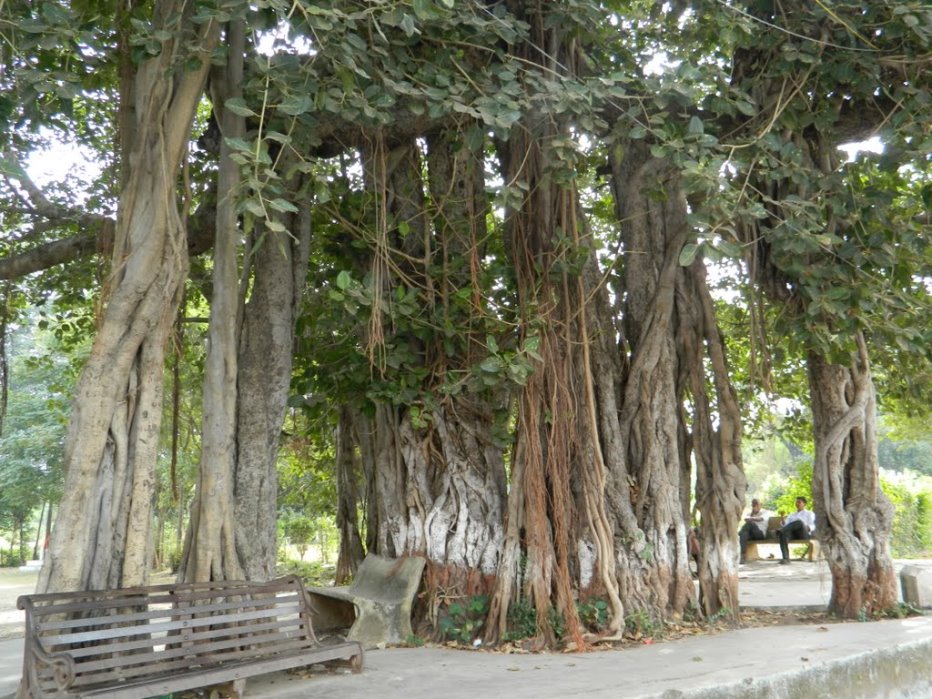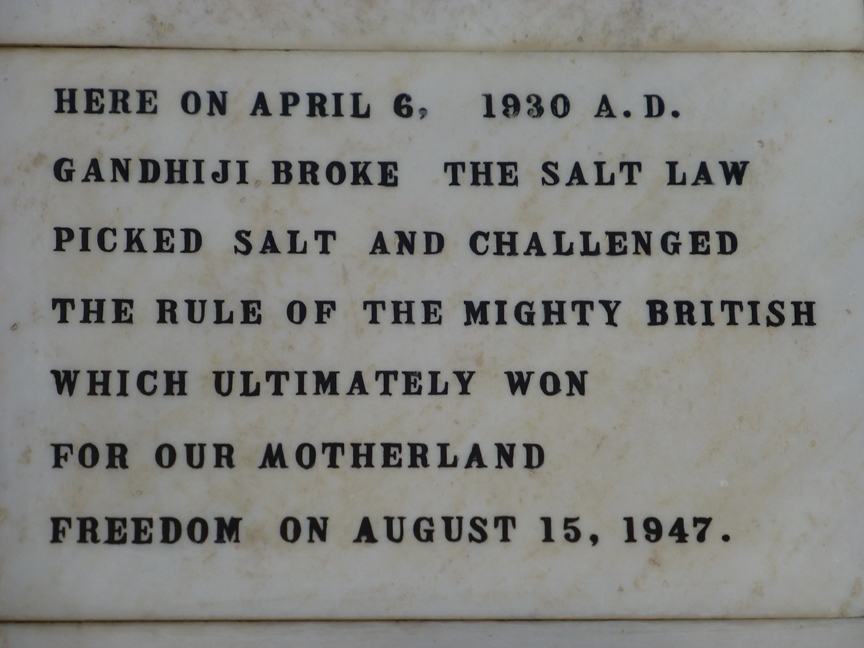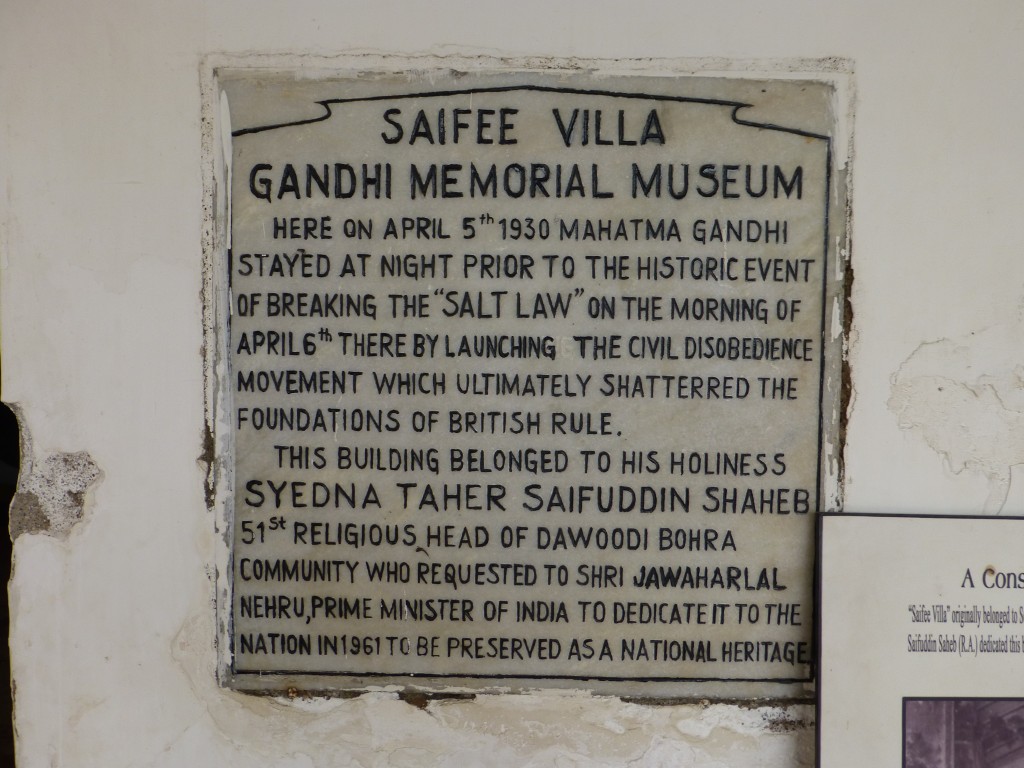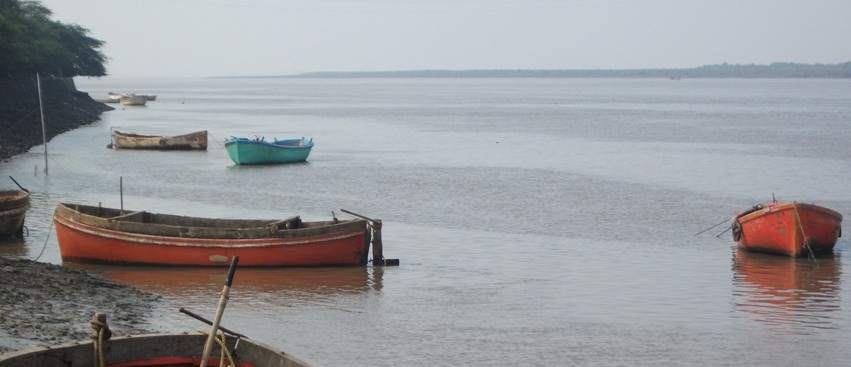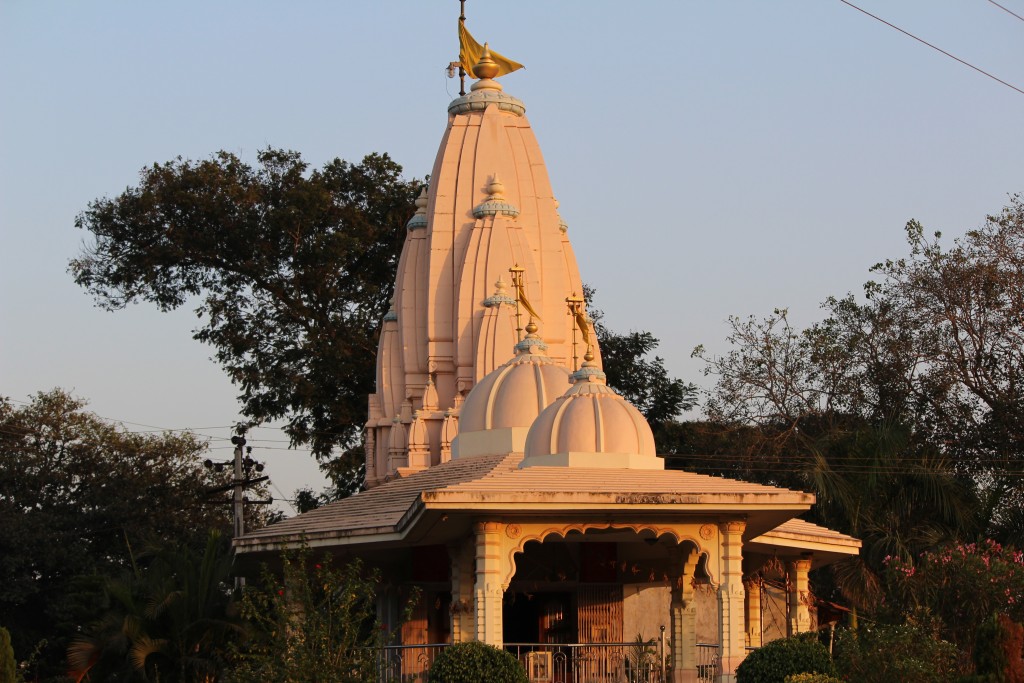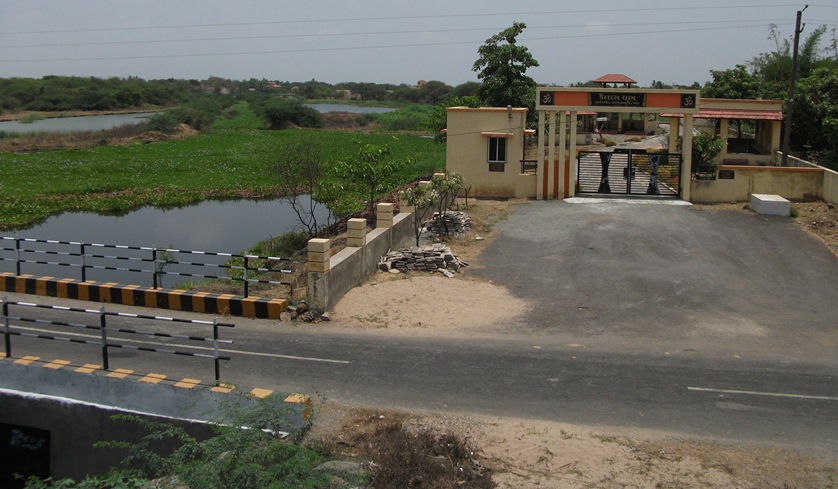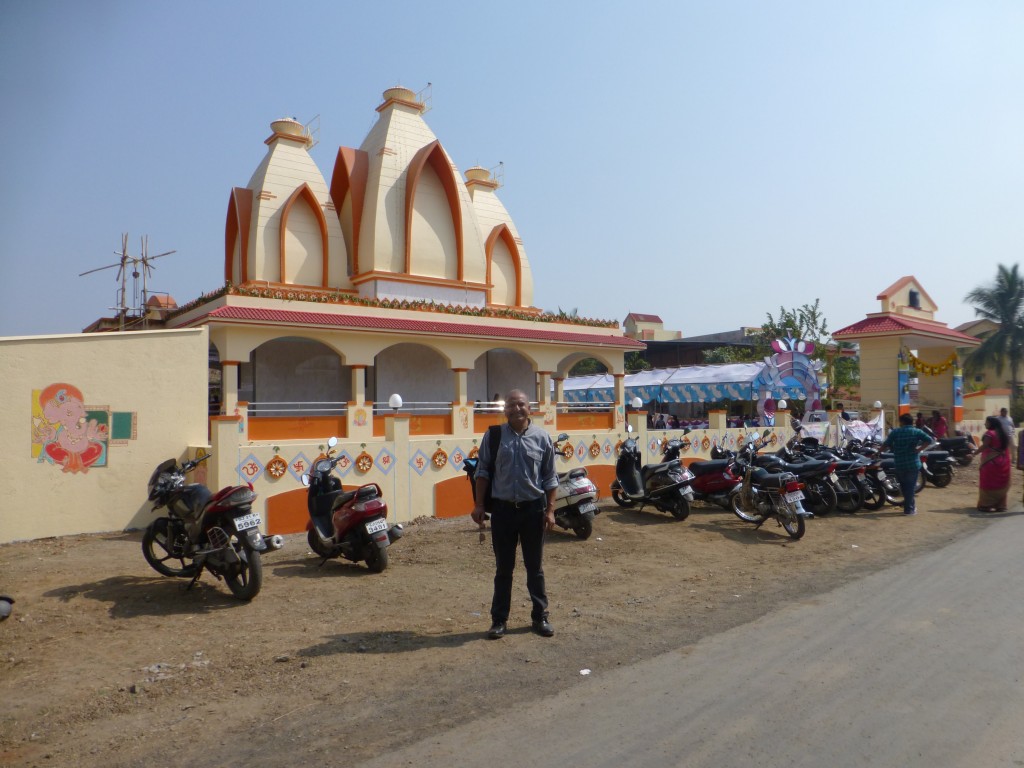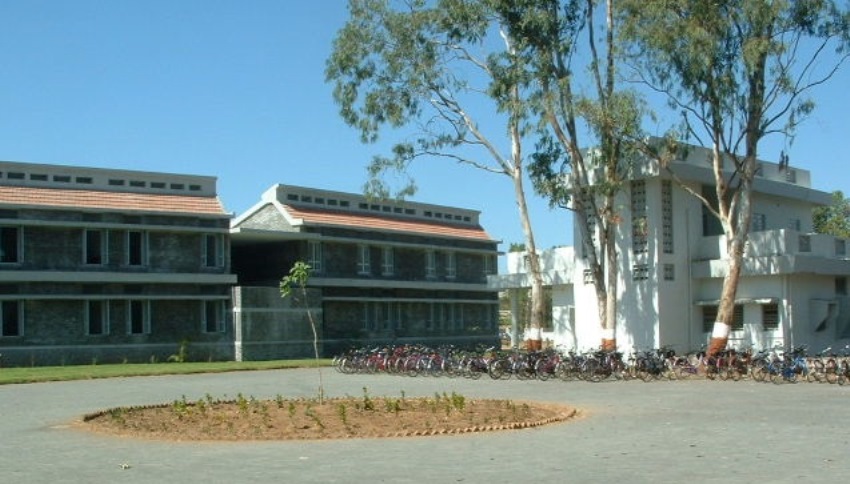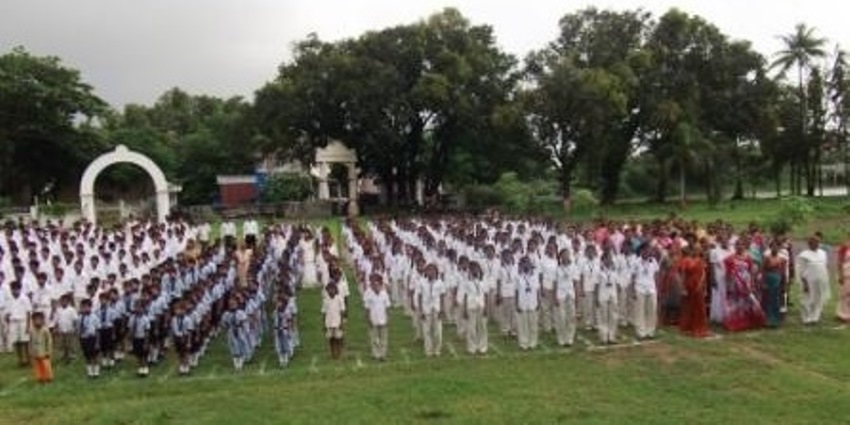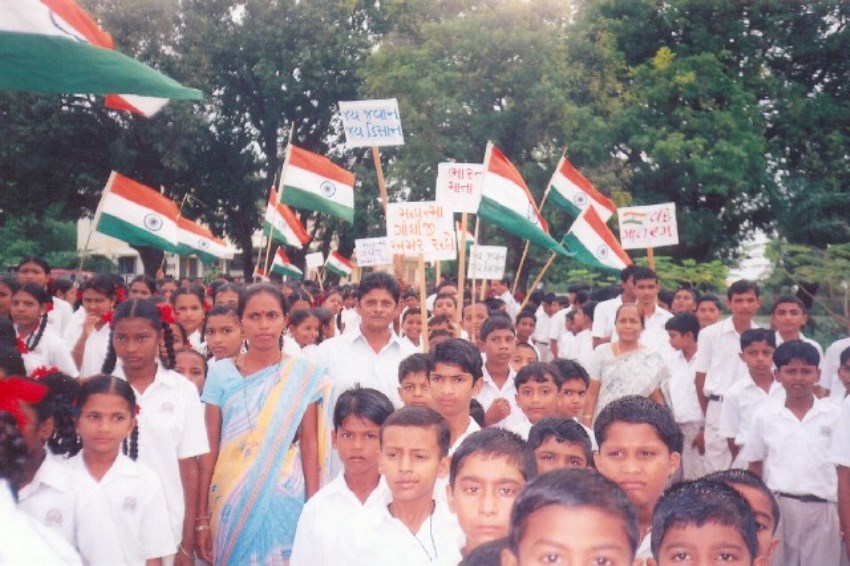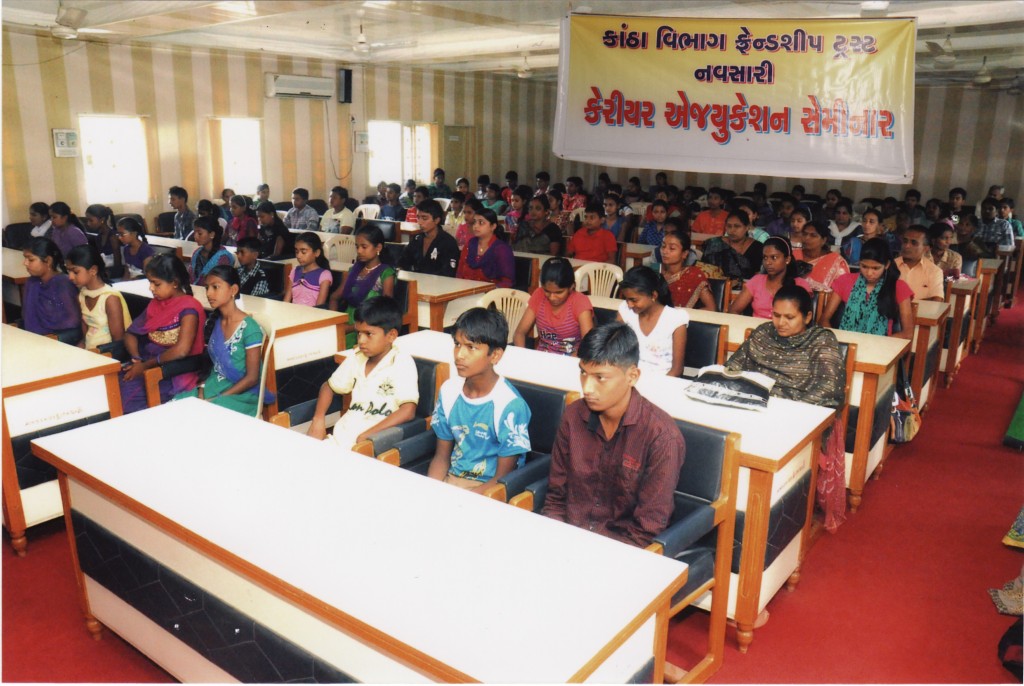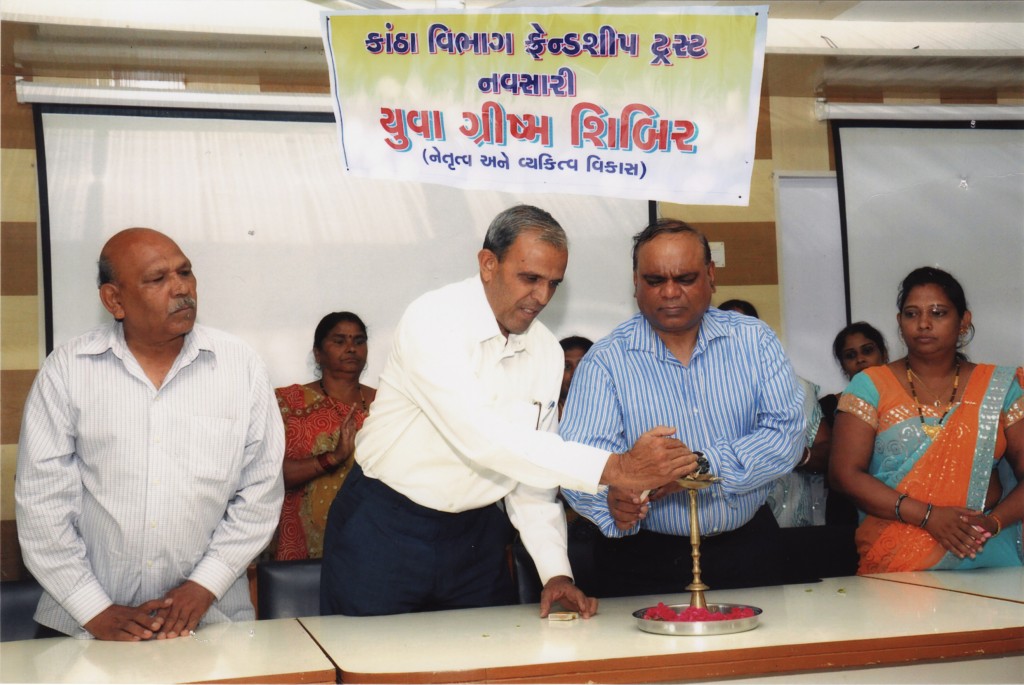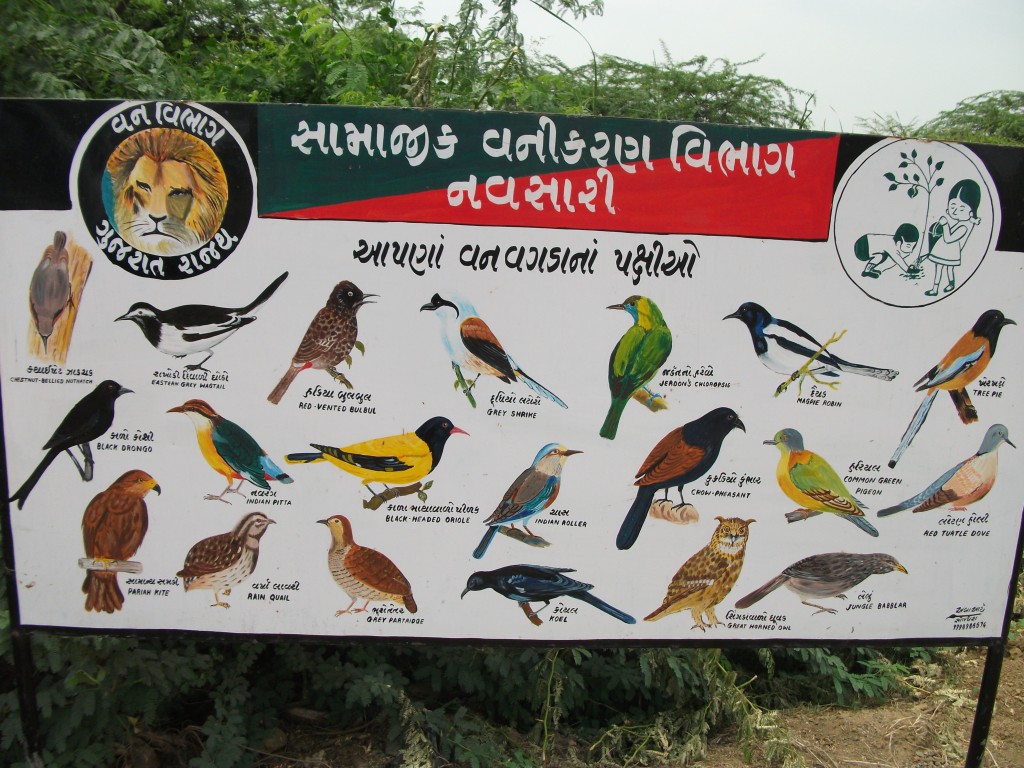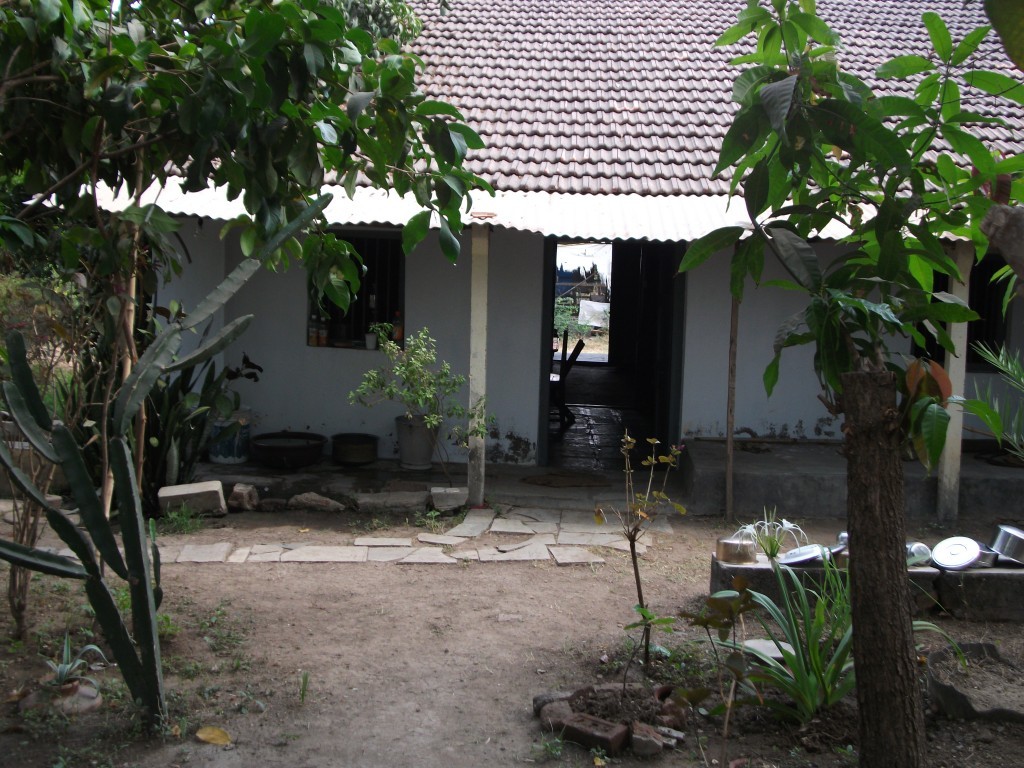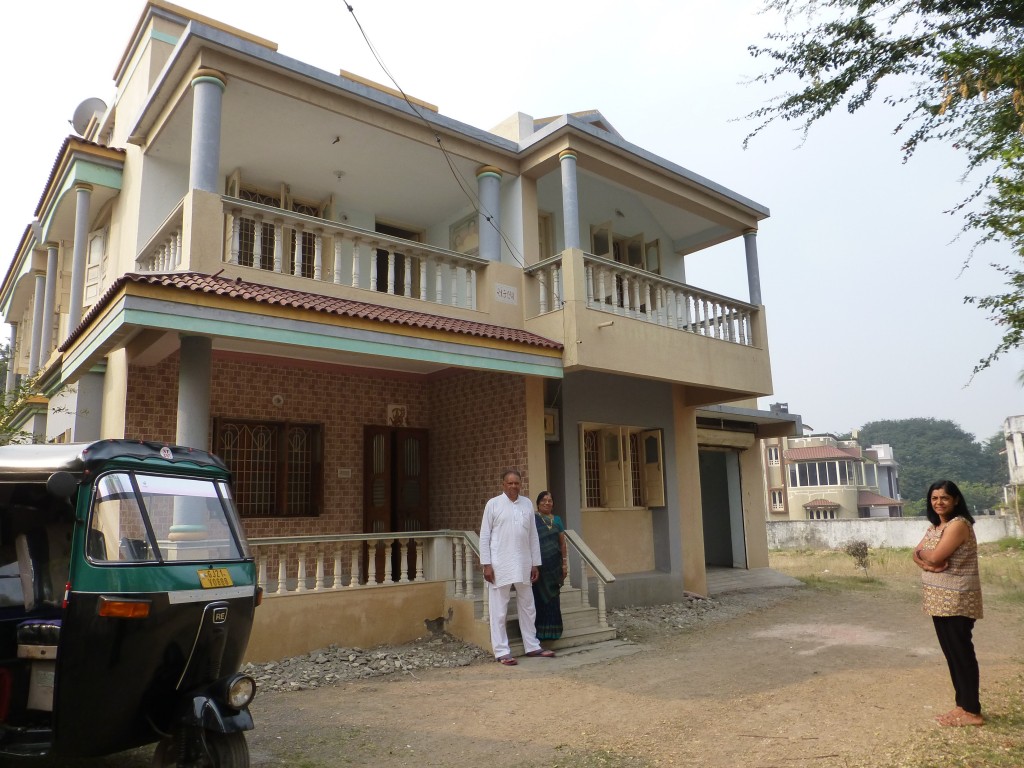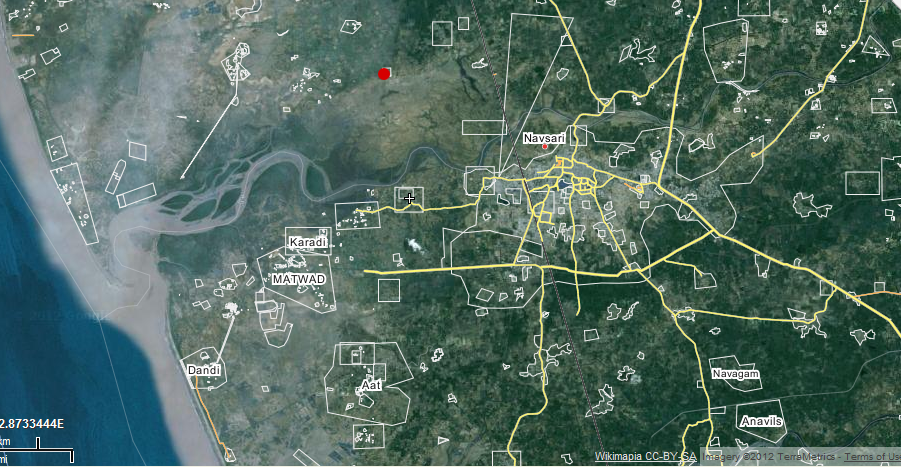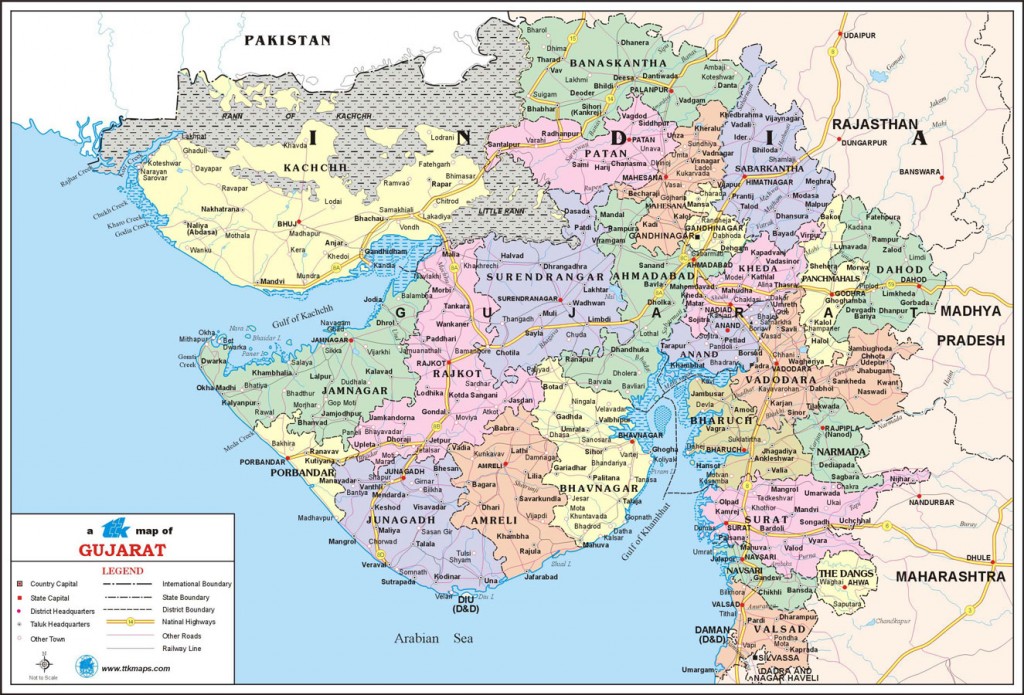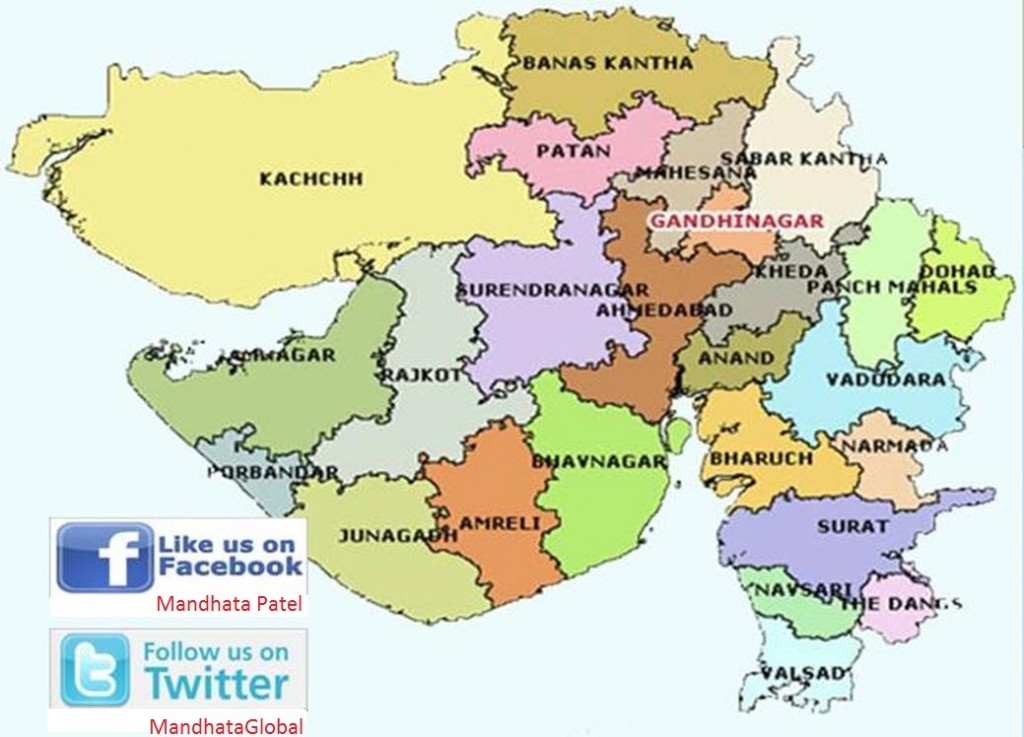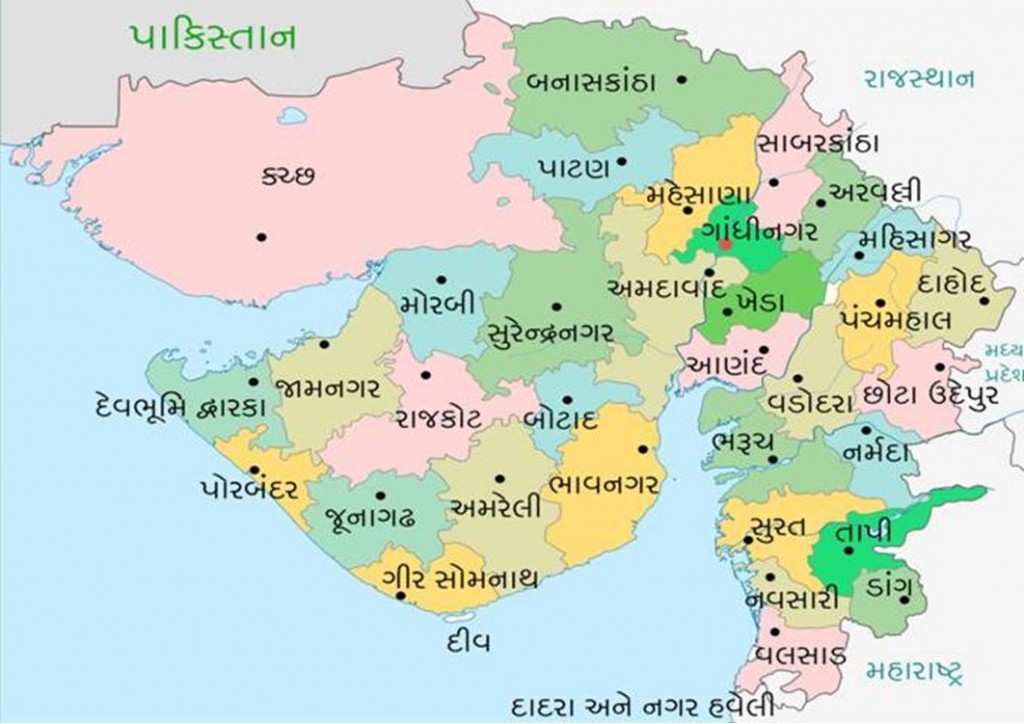Namaste! a Warm Welcome to the Global Website of the Mandhata Patel’s of the Kantha Vibhag area, Navsari District of Gujarat, India, a place for the community to collaborate and work together for future progress and joint development to make the world a better place.
Gujarat’s Mangrove cover grows to 1,175 square kms; Kutch district tops the chart
To protect and revitalize the essential coastal ecosystem, the state of Gujarat has worked towards mangrove conservation. Nationally, Gujarat ranks second after West Bengal in mangrove cover, expanding its area from 397 square kilometers in 1991 to 1,175 square kilometers by 2021.
The increased mangrove cover not only enhances biodiversity but also strengthens coastal resilience against erosion and extreme weather events, ensuring a secure and sustainable future for Gujarat’s coastal communities and ecosystems.
Discussing the expansion of mangrove cover in Gujarat, Forest and Environment Minister Shri Mulubhai Bera stated, “The Gujarat government has made a concerted effort to increase mangrove plantations in the state, resulting in an expansion of mangrove cover to 1,175 square kilometers. Nationally, Gujarat now ranks second in terms of mangrove cover, which is a remarkable achievement. PM Narendra Modi has consistently emphasized sustainable development through environmental conservation. Under the leadership of Chief Minister Bhupendra Patel, Gujarat is committed to environmental protection, thereby realizing the vision of Viksit Gujarat to Viksit Bharat.”
The Gujarat government had initiated an extensive mangrove plantation campaign from 2014-15 to 2022-23. Plantation efforts expanded in 2016-17, covering 9,080 hectares, with the Gulf of Kutch seeing the most significant expansion adding 4,920 hectares of new plantation. The plantations efforts continue, tailored to the unique needs of each region. In 2023-24, Gujarat completed 6,930 hectares of new mangrove plantation, with plans to plant mangroves in an area of over 12,000 hectares in 2024-25.
Mangroves: Strategic Distribution Across Gujarat
Gujarat’s mangrove cover is strategically distributed across four main areas of the state. The Kachchh district leads with 799 square kilometers of mangrove cover, constituting the majority of the state’s mangrove area. The Gulf of Kutch, including regions like Marine National Park and Sanctuary, Jamnagar, Rajkot (Morbi), Porbandar, and Devbhoomi Dwarka, contributes an additional 236 square kilometers of mangrove cover.
Central and Southern Gujarat, covering the Gulf of Khambhat and Dumas-Ubharat areas and districts such as Bhavnagar, Ahmedabad, Anand, Bharuch, Surat, Navsari, and Valsad, accounts for 134 square kilometers of mangrove area. The Saurashtra region, encompassing districts like Amreli, Junagadh, and Gir-Somnath, holds a modest 6 square kilometers of mangrove cover.
Importance of the Mangrove Ecosystem
Mangroves are coastal forests comprising of trees that thrive in saline water. They play a crucial role in enhancing water quality through nutrient and sediment filtration. These ecosystems are vital for supporting marine life, stabilizing coastal soils, preventing saline intrusion, and buffering against natural disasters like hurricanes. Approximately 1,500 species of plants and animals, including fish and birds, rely on mangroves, utilizing the shallow waters beneath the trees as breeding grounds.
Recent research indicates that mangroves are also vital for mammals such as monkeys, sloths, tigers, hyenas (Jarakh), and African wild dogs. These findings highlight the extensive ecological significance of mangroves, extending beyond their traditional role as nurseries for fish and birds.
Gujarat’s growth in mangrove cover over the last two decades demonstrates its commitment to environmental protection. By planting mangroves in key areas Gujarat has not only enriched biodiversity but also strengthened coastal resilience.
ગુજરાતનું મેન્ગ્રોવ આવરણ 1,175 ચોરસ કિલોમીટર સુધી વધે છે; કચ્છ જિલ્લો ચાર્ટમાં ટોચ પર છે
આવશ્યક દરિયાઇ ઇકોસિસ્ટમના રક્ષણ અને પુનરુત્થાન માટે, ગુજરાત રાજ્યએ મેન્ગ્રોવ સંરક્ષણ તરફ કામ કર્યું છે. રાષ્ટ્રીય સ્તરે, મેન્ગ્રોવ કવરમાં ગુજરાત પશ્ચિમ બંગાળ પછી બીજા ક્રમે છે, જે 1991માં 397 ચોરસ કિલોમીટરથી 2021 સુધીમાં 1,175 ચોરસ કિલોમીટર સુધી વિસ્તરે છે.
મેન્ગ્રોવનું વધેલું આવરણ માત્ર જૈવવિવિધતાને જ નહીં પરંતુ ધોવાણ અને આત્યંતિક હવામાનની ઘટનાઓ સામે દરિયાકાંઠાની સ્થિતિસ્થાપકતાને પણ મજબૂત બનાવે છે, જે ગુજરાતના દરિયાકાંઠાના સમુદાયો અને ઇકોસિસ્ટમ્સ માટે સુરક્ષિત અને ટકાઉ ભવિષ્યની ખાતરી કરે છે.
ગુજરાતમાં મેન્ગ્રોવ કવરના વિસ્તરણ અંગે ચર્ચા કરતા વન અને પર્યાવરણ મંત્રી શ્રી મૂળુભાઈ બેરાએ જણાવ્યું હતું કે, “ગુજરાત સરકારે રાજ્યમાં મેન્ગ્રોવના વાવેતરને વધારવા માટે એક નક્કર પ્રયાસ કર્યો છે, જેના પરિણામે મેન્ગ્રોવ કવરનું વિસ્તરણ 1,175 ચોરસ કિલોમીટર થયું છે. રાષ્ટ્રીય સ્તરે, ગુજરાત હવે મેન્ગ્રોવ કવરની દ્રષ્ટિએ બીજા ક્રમે છે, જે એક નોંધપાત્ર સિદ્ધિ છે. પીએમ નરેન્દ્ર મોદીએ સતત પર્યાવરણ સંરક્ષણ દ્વારા ટકાઉ વિકાસ પર ભાર મૂક્યો છે. મુખ્યમંત્રી ભૂપેન્દ્ર પટેલના નેતૃત્વ હેઠળ, ગુજરાત પર્યાવરણ સંરક્ષણ માટે પ્રતિબદ્ધ છે, ત્યાંથી વિકસીટ ગુજરાતથી વિકસીત ભારતનું વિઝન સાકાર થાય છે.”
ગુજરાત સરકારે 2014-15 થી 2022-23 સુધી વ્યાપક મેન્ગ્રોવ પ્લાન્ટેશન ઝુંબેશ શરૂ કરી હતી. 2016-17માં 9,080 હેક્ટરમાં વાવેતરના પ્રયાસો વિસ્તર્યા, જેમાં કચ્છના અખાતમાં સૌથી વધુ નોંધપાત્ર વિસ્તરણ જોવા મળ્યું જેમાં 4,920 હેક્ટર નવા વાવેતરનો ઉમેરો થયો. દરેક ક્ષેત્રની અનન્ય જરૂરિયાતોને અનુરૂપ, વાવેતરના પ્રયાસો ચાલુ રહે છે. 2023-24માં, ગુજરાતે 2024-25માં 12,000 હેક્ટરથી વધુ વિસ્તારમાં મેન્ગ્રોવનું વાવેતર કરવાની યોજના સાથે 6,930 હેક્ટરમાં નવા મેન્ગ્રોવનું વાવેતર પૂર્ણ કર્યું છે.
મેન્ગ્રોવ્ઝ: સમગ્ર ગુજરાતમાં વ્યૂહાત્મક વિતરણ
ગુજરાતનું મેન્ગ્રોવ કવર વ્યૂહાત્મક રીતે રાજ્યના ચાર મુખ્ય વિસ્તારોમાં વહેંચાયેલું છે. કચ્છ જિલ્લો 799 ચોરસ કિલોમીટર મેન્ગ્રોવ કવર સાથે અગ્રેસર છે, જે રાજ્યના મેન્ગ્રોવ વિસ્તારનો બહુમતી ધરાવે છે. મરીન નેશનલ પાર્ક અને અભયારણ્ય, જામનગર, રાજકોટ (મોરબી), પોરબંદર અને દેવભૂમિ દ્વારકા જેવા પ્રદેશો સહિત કચ્છનો અખાત મેન્ગ્રોવ કવરમાં વધારાના 236 ચોરસ કિલોમીટરનું યોગદાન આપે છે.
મધ્ય અને દક્ષિણ ગુજરાત, ખંભાતના અખાત અને ડુમસ-ઉભરત વિસ્તારો અને ભાવનગર, અમદાવાદ, આણંદ, ભરૂચ, સુરત, નવસારી અને વલસાડ જેવા જિલ્લાઓને આવરી લે છે, મેન્ગ્રોવ વિસ્તારનો 134 ચોરસ કિલોમીટરનો હિસ્સો ધરાવે છે. અમરેલી, જૂનાગઢ અને ગીર-સોમનાથ જેવા જિલ્લાઓને આવરી લેતા સૌરાષ્ટ્ર પ્રદેશમાં 6 ચોરસ કિલોમીટરનું મેન્ગ્રોવ આવરણ છે.
મેન્ગ્રોવ ઇકોસિસ્ટમનું મહત્વ
મેન્ગ્રોવ એ દરિયાકાંઠાના જંગલો છે જેમાં ખારા પાણીમાં ખીલેલા વૃક્ષોનો સમાવેશ થાય છે. તેઓ પોષક તત્ત્વો અને કાંપ ગાળણ દ્વારા પાણીની ગુણવત્તા વધારવામાં નિર્ણાયક ભૂમિકા ભજવે છે. આ ઇકોસિસ્ટમ્સ દરિયાઇ જીવનને ટેકો આપવા, દરિયાકાંઠાની જમીનને સ્થિર કરવા, ક્ષારયુક્ત ઘૂસણખોરી અટકાવવા અને વાવાઝોડા જેવી કુદરતી આફતો સામે બફર કરવા માટે મહત્વપૂર્ણ છે. માછલીઓ અને પક્ષીઓ સહિત છોડ અને પ્રાણીઓની લગભગ 1,500 પ્રજાતિઓ મેન્ગ્રોવ્સ પર આધાર રાખે છે, જે વૃક્ષોની નીચે છીછરા પાણીનો ઉપયોગ સંવર્ધન માટે કરે છે.
તાજેતરના સંશોધનો દર્શાવે છે કે વાંદરાઓ, સુસ્તી, વાઘ, હાયનાસ (જરખ) અને આફ્રિકન જંગલી કૂતરા જેવા સસ્તન પ્રાણીઓ માટે પણ મેન્ગ્રોવ મહત્વપૂર્ણ છે. આ તારણો માછલી અને પક્ષીઓ માટે નર્સરી તરીકેની તેમની પરંપરાગત ભૂમિકાથી આગળ વધીને મેન્ગ્રોવ્સના વ્યાપક ઇકોલોજીકલ મહત્વને પ્રકાશિત કરે છે.
છેલ્લા બે દાયકામાં મેન્ગ્રોવ કવરમાં ગુજરાતનો વિકાસ પર્યાવરણ સંરક્ષણ પ્રત્યે તેની પ્રતિબદ્ધતા દર્શાવે છે. ચાવીરૂપ વિસ્તારોમાં મેન્ગ્રોવનું વાવેતર કરીને ગુજરાતે માત્ર જૈવવિવિધતા જ નથી સમૃદ્ધ કરી પરંતુ દરિયાકાંઠાની સ્થિતિસ્થાપકતાને પણ મજબૂત કરી છે.
Janhavi Dadarkar | We SHOULD Have Confidence in Modi’s Government | Oxford Union. UK
Urgent Action needed for protecting villages from rising sea levels because of Global Warming (Sea Barrier Conservation Project)
A. Introduction
An extensive portion of the land alongside the sea at Dandi and further south along the coastline in the Kantha Vibhag area has a problem of sea erosion and sea water overflowing into agricultural lands and over time this area has become unusable because of the saltiness of the land (know as Khanjar). This will continue to be a bigger problem because of rising oceans. Seasonal Monsoon flooding is another problem that has to be addressed, flooding in the villages during the rainy season disrupts life and it takes months to recover, proper draining and preparedness for the annual rains will alleviate the issue.
There is now an increasing need to protect the coastline and inner areas of our gams from sea water and erosion, especially because of rising waters due to global warming. Sea Water that has been flowing into the Khanjar areas over the years has been turning good arable farm land into unusable land caused by salty sea water and sea erosion. This can readily be reversed by erecting natural sea barriers where sea water overflows into the land in the form of sand and rock barriers and mangrove vegetation. Fish farmers who currently use sea water can continue doing so by piping sea water to the required pond areas.
Any solutions implemented should take into consideration monsoon rains together with the problems of drainage and runoff of much needed fresh water into the sea, it may be desirable to store this water perhaps in a lake. A feasibility study of all possible solutions should be presented before any project is started, this will all be done with the help and collaboration of the regional government departments.
As part of the Tree Planting Project, thousands of trees should be planted on the Dandi coastline as protection against natural calamities like cyclone, hurricane, Tsunami, etc.
B. Key Issues
– Severe sea erosion problems in some areas on the beachfront and further inland
– Sea levels rising every year due to climate change
– the solution of P.P. Gabions is not suitable
– Protection by using tetrapod mays be part of the solution, though high cost may be an issue
– If protection work is carried out by larger size stones, Gabions, Tetrapods, Beach will loose its
natural beauty
– a study needs to be conducted before a solution is implemented
– requires a permanent long term solution
– time is of the essence, if the government is unable to help with a timely solution then a community funded solution will be the only alternative.
C. Potential Solutions and Opportunities
The one solution is to put up barriers that will prevent sea water from overflowing into land areas, these barriers should be as high as the height of the highest watermark during high tide multiplied by two, this will ensure a permanent long term solution. Routine maintenance has to be planned on a periodic basis, perhaps quarterly to ensure that the barriers are not compromised due to soil erosion and wave action.
Land Reclamation – preventing sea water from overflowing into the area and reversing the saltiness of the Khanjar area will suddenly make hundreds of acres of land available for farming and other non-agricultural uses.
D. Challenges
1. Currently, sea water is used by the fishing industry in ponds, continuation of this supply is necessary by providing piping from the coastal area to the inland ponds on a limited basis.
2. Funding for the project
3. If nothing is done then there is a threat the entre Kantha Vibhag area may be overrun with sea water and it will result in loss of farmland and habitat.
E. Project Implementation
– All work that has to be done should be conducted with the help and permission of the relevant government authorities.
– A detailed project plan and timeline should be established
– Proper project management and controls to be in place
 1. Download Kantha Vibhag Sea Barrier Project – English
1. Download Kantha Vibhag Sea Barrier Project – English
 ?. Download Kantha Vibhag Sea Barrier Project – Gujarati
?. Download Kantha Vibhag Sea Barrier Project – Gujarati
 3? Download Kantha Vibhag Sea Barrier Project – Hindi
3? Download Kantha Vibhag Sea Barrier Project – Hindi
National Jal Shakti Abhiyan Project
*** Tree Planting Project
Tree Planting Project
 1. Download Sanskrutik Vano – Gujarati
1. Download Sanskrutik Vano – Gujarati
 2. Download Sanskrutik Vano – English
2. Download Sanskrutik Vano – English
*** Proposed Hotel and Supermarket Project
. Proposed Hotel and Supermarket Project
 1. Download Gam Development Report – English
1. Download Gam Development Report – English
 2. Download Gam Development Report – Gujarati
2. Download Gam Development Report – Gujarati
 3A. Download Report – Kantha Vibhag Friendship Trust Report – English
3A. Download Report – Kantha Vibhag Friendship Trust Report – English
 3B. Download report Kantha Vibhag Friendship Trust Report – Gujarati
3B. Download report Kantha Vibhag Friendship Trust Report – Gujarati
 4. Download Brief History of Koli Samaj
4. Download Brief History of Koli Samaj
 5. Download Health and Healing, a series of articles on the Science of Health and Healing by Dr. Devananda Tandavan
5. Download Health and Healing, a series of articles on the Science of Health and Healing by Dr. Devananda Tandavan
 1. Download Essence of Hinduism by Gandhi
1. Download Essence of Hinduism by Gandhi
 2. Download 11 Vows of Gandhi
2. Download 11 Vows of Gandhi
 3. Download The Man Who Saved India – Sardar Patel (The Gospel of Selfless Action)
3. Download The Man Who Saved India – Sardar Patel (The Gospel of Selfless Action)
 4. Download Gandhi’s book – From Yeravda Mandir
4. Download Gandhi’s book – From Yeravda Mandir
 Download “We are Hindus” (illustrated) by Dineshbhai Patel (Swinden)
Download “We are Hindus” (illustrated) by Dineshbhai Patel (Swinden)
*** Featured Sites:
. Green Message – Spirituality, Sanskrit and Nature
. Gujarat Online
. Gujarat State – NRI Site
. Divyabhaskar – Gujarati News/Samachar ePaper
. Divyabhaskar – Gujarati News/Samachar
. Gujarati One India News Site
. World Hindu News
. One India News Site
. Aksharnaad.com
. DeshGujarat.com
. India Barriers
. Gujarati Lexicon
. Gujarat Tourism
. Shodh Ganga – Reservoir of Indian Thesis
. PDF DRIVE – Download Free PDF Files
. News India Times
. The Better India
. State of the Planet
*** Astrology:
. Ask Ganesha
. Drik Panchang (all year)
. Daily Panchang
. Vedic Calendar
. Download iCal, Outlook and Google calendar format Vedic Calendars
. Gujarati Calendars – Vikram Samvat Hindu Tithi Calendar
Purpose of the Website:
-
First and foremost, is to recognize our roots and rich culture and heritage and social and community practices which is prevalent in all our communities around the world.
-
Valuing and drawing up existing knowledge, skills and talents of the members of the Mandhata Community Globally.
-
 Networking with each other, helping and guiding members and affiliated associations to optimise their abilities in order to fulfil set objectives.
-
Addressing specific issues on their own merits and proven experiences.
-
Develop and enhance the quality of life in our village areas in India by promoting education and development in all spheres of life.
-
Record and Archive our roots and heritage and make it available globally.
-
Promote Hindu Religious, Spiritual, Cultural and Social Practices
-
Recognize and acknowledge achievements by our people around the world.
-
Network and share Best Practices to ensure a peaceful and sustainable future for our communities around the world by living in harmony with people and nature and to protect the environment.
-
Make positive contributions to society in general and to all the people and countries that we live in, around the world
[n.b. If you would like to contribute material for the site (photos or documents) or to become an Editor, please send a message to the email account [email protected].]
____________________________________________________________________
Mandhata Community – Who are We ???
Mandhata Community refers to all the Koli Patel Community people who originated from the Kantha Vibhag area in Navsari District of South Gujarat in India and also those who migrated to various overseas countries.
The first Koli Patel immigrants from Navsari District are recorded to have sailed for South Africa in 1860. Over the years since then many more joined them. Others traveled to Fiji and then to New Zealand as early as 1902. During the War years and later large numbers traveled to East Africa.
Initially they came to work on the plantations and to build roads and railways. As years passed the vast majority of them settled in the countries where they worked. The first immigrants were all young men who went back to their local villages to get married and return to be followed by their wives a little later.
It is these immigrants who identified themselves as Mandhata Community. It is estimated that they number over a hundred thousand. UK has over 40,000 settled mainly in large cities and are now involved in almost all professions and in every industry, as in other countries too.
A vast number of us settled overseas are now sixth and seventh generation. Even the later arrivals boast third and forth generation. Yet we have continued close relationship with our extended families in India. Most of us visit regularly and many have built homes on their ancestral land.
This site highlights the history and life of the Mandhata Patel Community.
Site Specifics
This site has been built using a web content management framework, this will enable many people around the world to contribute content without any programming skills, all that is required is basic computer skills, this will ensure that content is contibuted by our communities around the world and also will ensure independance, so that no one person is tasked with the responsibility of maintaining the site. If you’d like to become a contributor, simply send an eMail message to our group email address, mandhataglobal.com. (exclude the period).
The site has been kept as simple as possible. Anyone with a basic knowledge of computing and internet will be able to interact. We are aware that a large number of you have a fund of knowledge to contribute to this site so that it can become a comprehensive repository of our history and heritage illustrated in words and pictures. In years to come this site would develop into a resource that our coming generations would refer to learn about their roots. We invite you to volunteer yourself as an administrator.
This site will be bilingual. We shall use English and Gujarati to reach as many of our people as possible.
On this site you will be able to read shorter articles in full, and where need be a .pdf version to copy. Large articles and other printed material will be in .pdf format for copying and printing.
Migration History
Preamble
When in the quiet of the night the question arises in your mind as to who your forefathers were? Where did they come from? How did they live? And you desperately want to explore your roots, this website may help you..
Perhaps the obvious starting point of this inquiry could be our own first hand knowledge of the stories told by our fathers and grandfathers of their experiences in their villages and how they made it to the foreign lands all over the world.
From their own lips we have heard how a few young men from the villages found construction jobs building railways in Surat and other nearby cities. Back in village for holidays their offers of help led more youths to join them. At work they came in contact with other peoples and particularly the English who valued their construction knowledge. This broadened their horizon. When opportunities came their way to work for railways in East Africa, plantations in South Africa and New Zealand many volunteered and packed their bags.
From their own lips we have heard how a few young men from the villages found construction jobs building railways in Surat and other nearby cities. Back in village for holidays their offers of help led more youths to join them. At work they came in contact with other peoples and particularly the English who valued their construction knowledge. This broadened their horizon. When opportunities came their way to work for railways in East Africa, plantations in South Africa and New Zealand many volunteered and packed their bags.
My paternal and maternal grandfathers both came to Mombasa, in East Africa to work on the Railways in 1919/21. They were perhaps among the first there and in their own words life was terrible. They lived in tents and were always in fear of the wild animals. For the first year or two they survived on boiled lentils with some pepper and salt. Later they grew chillies and ginger. Apart from bhajan singing in the dim light of a lantern, other entertainment was zero. Life in South Africa or New Zealand was no different. This was soon after the First World War period. Political power struggle was intense among the European powers and British were digging in wherever they went.
Period prior to the Second World War was the 2nd wave of immigration for our people. Passports were easily available and hundreds of youths leaving their families behind boarded sea-going clippers and left in search of a better life. A number of them perished and for the many who made it, life was very, very hard in every respect. Homesickness gripped many.
Read further about our History in the articles below.
 1C. Read/Download the story of India’s Historic People by Keshavbhai J Patel – 1st Edition (201)
1C. Read/Download the story of India’s Historic People by Keshavbhai J Patel – 1st Edition (201)
 2. Read/Download the Early Katha Migration in Gujarati by Maganbhai B Karadia
2. Read/Download the Early Katha Migration in Gujarati by Maganbhai B Karadia
 3. Read/Download ‘Our Finest Patriotic Years by Maganbhai B Karadia
3. Read/Download ‘Our Finest Patriotic Years by Maganbhai B Karadia
 4. Read/Download ‘Koli Samaj, a Historical Perspective’ by Dr. Arjun Patel
4. Read/Download ‘Koli Samaj, a Historical Perspective’ by Dr. Arjun Patel
 5. Read/Download ‘ History of Koli/Mandhata Patel People’
5. Read/Download ‘ History of Koli/Mandhata Patel People’
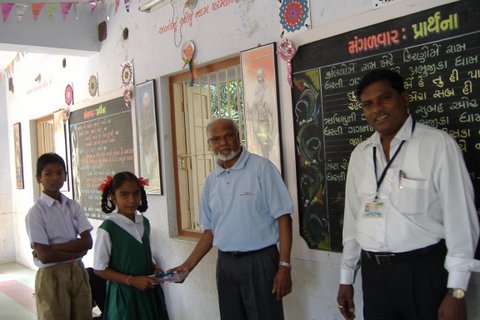
Youth Leadership and Educational Seminar
Shree Amratbhai Jerambhai Patel (in blue Shirt) And Shreemati Taraben Amratbhai Patel of Machhad are residents in USA. Both are generous donors of our Samaj. They visit Gam almost every year and sponsor a number of project in Machhad, other Kantha Vibhag gams. They are particularly interested in educational projects which we organise year after year. Their generous sponsorship help students with scholarships and various educational seminars for the students. This Leadership Seminar was hosted by them and was held on 12th April 2014.
Download Gujarat Travel Guide 1:  Gujarat Travel Guide
Gujarat Travel Guide
____________________________________________________________________
Download Gujarat Travel Guide 2:  Gujarat Travel Guide
Gujarat Travel Guide
____________________________________________________________________
Download Lonely Planet Gujarat Travel Guide 3:  Gujarat Travel Guide
Gujarat Travel Guide
____________________________________________________________________
GujTube.com GujTube.com TOP Gujarati Entertainment Site
____________________________________________________________________
Gujarat State Portal Gujarat State Portal
____________________________________________________________________
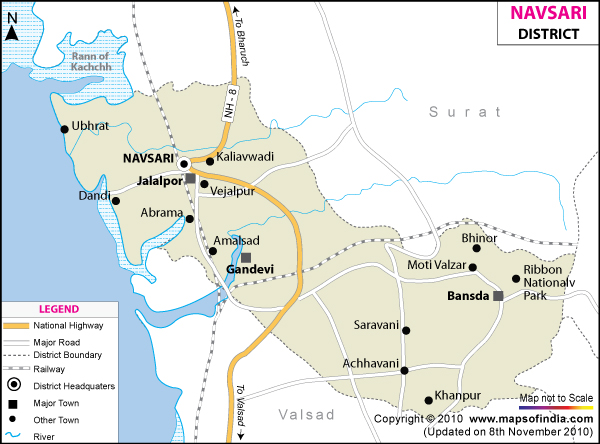
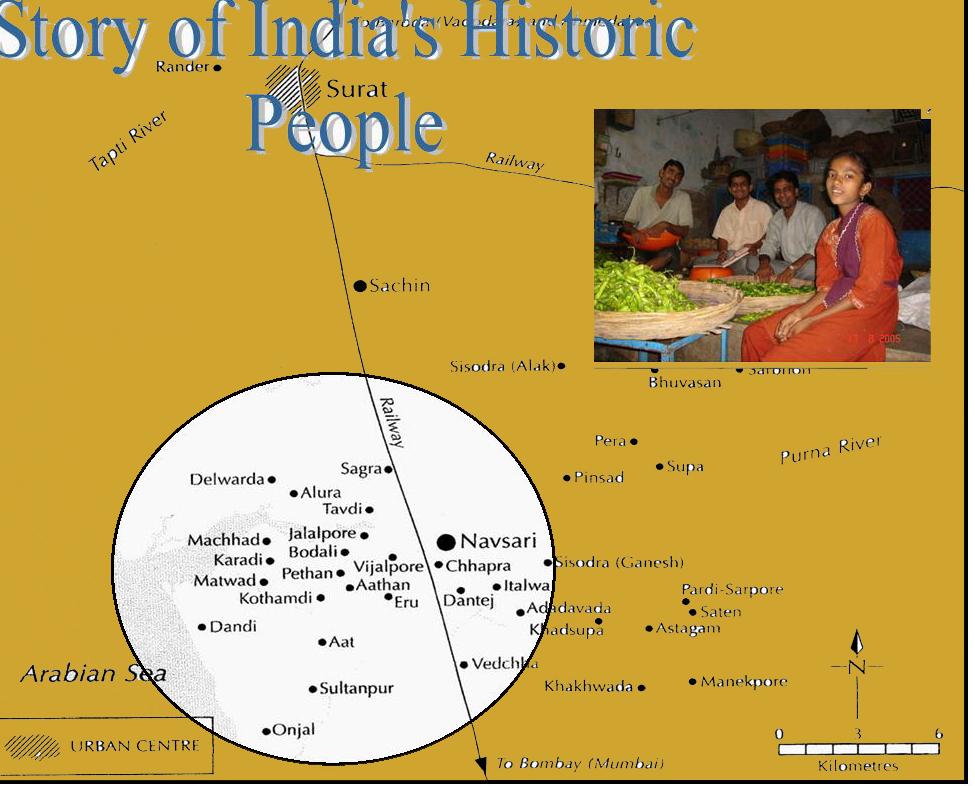
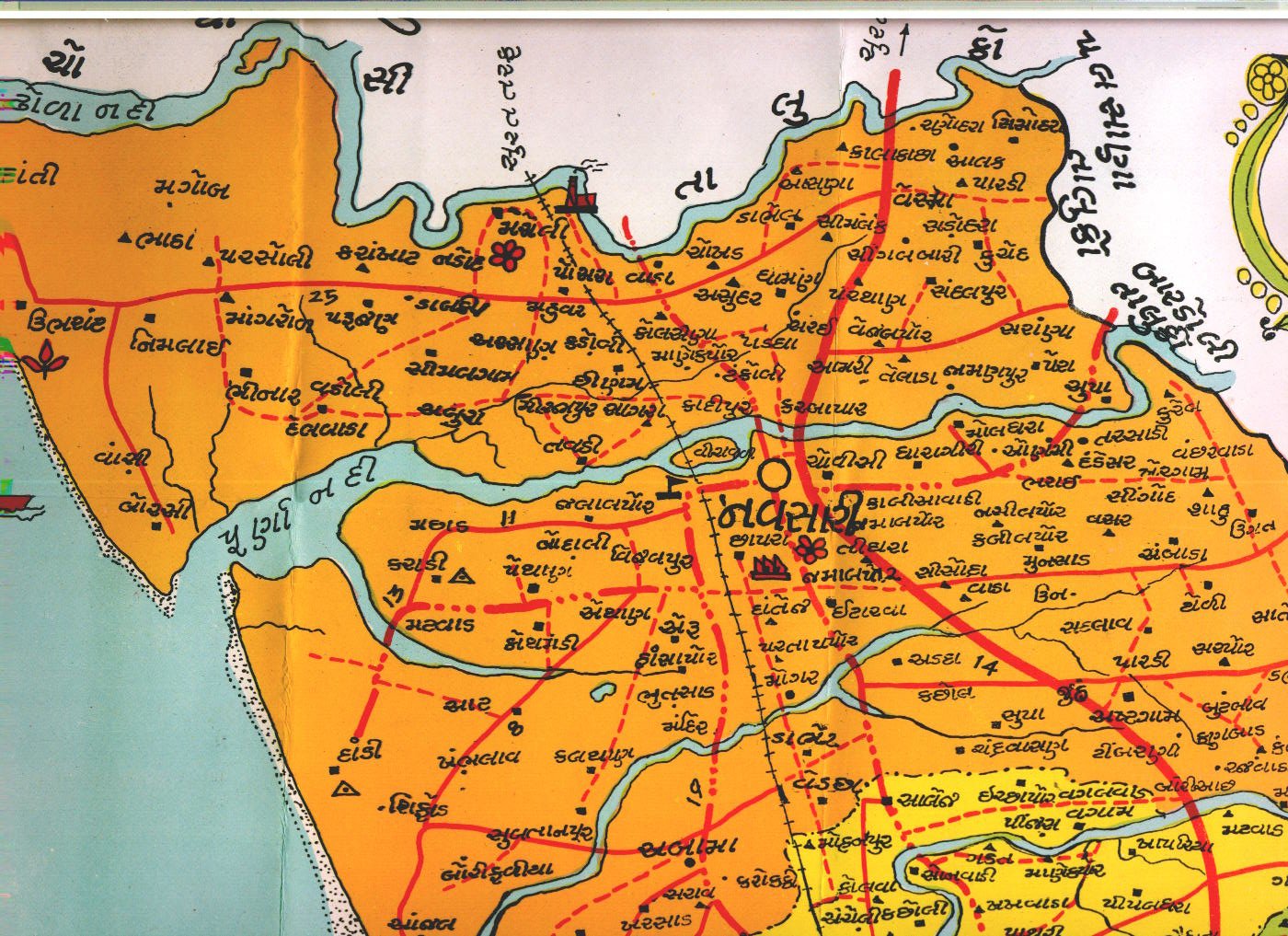
_________________________________________________________________
Gujarat Travel Map (click on map to enlarge)
_________________________________________________________________
List of Villages in Jalalpore, Navsari, Gujarat
- Abrama
- Alak
- Alura
- Arsan
- Asana
- At
- Bhatha
- Bhinar
- Bhutsad
- Bodali
- Borsi
- Chhinam
- Chijgam
- Chokhad
- Dabhel
- Dalki
- Dambher
- Dandi
- Danti
- Delvada
- Dipla
- Eroo
- Ethan
- Hansapor
- Jalalpore
- Kadoli
- Kalakachha
- Kalthan
- Kanera
- Karadi
- Karankhat
- Karod Kothva
- Khambhlav
- Kharsad
- Kolasana
- Kothamadi
- Krushnapur
- Kuched
- Machhad
- Magob
- Mandir
- Manekpor
- Mangrol
- Maroli
- Matwad
- Mirjapor
- Nadod
- Nimlai
- Onjal
- Panar
- Pardi (Alak)
- Parsoli
- Parujan
- Pethan
- Ponsara
- Ranodra
- Sadodra
- Sagra
- Samapor
- Sandalpor
- Sarav
- Simalgam
- Simlak
- Sisodra (Alak)
- Sultanpur
- Tankoli
- Tavdi
- Umbhrat
- Vadoli
- Vansi
- Vedchha
- Vesma
- Wada

